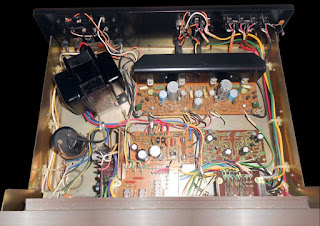ksulliva01
Member
- Joined
- Jun 25, 2020
- Messages
- 24
- Likes
- 17
Those who know more about electronics than me - if an amp's chassis is completely cool / room temp to the touch, and the amp has been running for a few hours at decent mid-high volume levels, does this mean there are no issues with overheating?
I ask because of a recent shelving change, I've had to put my old 70's Pioneer SA5200 on a shelving unit that has essentially a few MM (!) of space for ventilation on the top of the amp. However, the sides, front and back are completely open and the amp has always run very cool. No issues so far, but seeing it tight in there like that just freaks me out a little. The amp sounds great and the chassis remains cool to the touch after hours of listening. If this is the case, do I have to still worry about any sort of overheating issues? Could it still be heating a bit too much internally and I'm not realizing it? My thought is that if the rear top of the chassis, which sits only an inch or so over the heat sink and transformer, is completely cool to the touch - then I probably have nothing to worry about. Any thoughts on this?
Note: this little (supposed) 10 watt per channel amp is very loud and I don't usually push the volume past 2-3 out of 10 in my small listening room.
I ask because of a recent shelving change, I've had to put my old 70's Pioneer SA5200 on a shelving unit that has essentially a few MM (!) of space for ventilation on the top of the amp. However, the sides, front and back are completely open and the amp has always run very cool. No issues so far, but seeing it tight in there like that just freaks me out a little. The amp sounds great and the chassis remains cool to the touch after hours of listening. If this is the case, do I have to still worry about any sort of overheating issues? Could it still be heating a bit too much internally and I'm not realizing it? My thought is that if the rear top of the chassis, which sits only an inch or so over the heat sink and transformer, is completely cool to the touch - then I probably have nothing to worry about. Any thoughts on this?
Note: this little (supposed) 10 watt per channel amp is very loud and I don't usually push the volume past 2-3 out of 10 in my small listening room.

